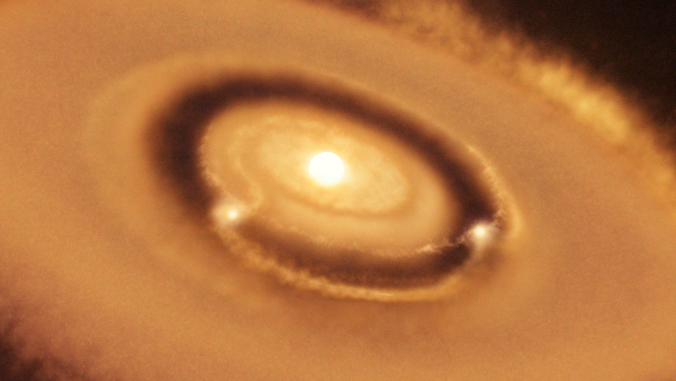
New evidence shows the first-ever pictures capturing the birth of a pair of planets orbiting the star PDS 70 are in fact authentic.
Astronomers from the University of Hawaiʻi Institute for Astronomy were part of a Caltech-led team that used a new infrared pyramid wavefront sensor for adaptive optics (AO) correction at W. M. Keck Observatory on Maunakea. The team applied a new method of taking family photos of the baby planets (a.k.a. “protoplanets”) and confirmed their existence.
The team’s results were recently published in The Astronomical Journal.
PDS 70 is the first known multi-planetary system where astronomers can witness planet formation in action. The first direct image of one of its planets, PDS 70b, was taken in 2018 and followed by multiple images taken at different wavelengths of its sibling, PDS 70c, in 2019. Both Jupiter-like protoplanets were discovered by the European Southern Observatory’s Very Large Telescope in Chile.
“How planets form is one of the great mysteries in modern astronomy, and the baby planets around PDS 70 are really exciting objects to help figure this out,” said UH astronomer Michael Liu, a co-author of the study.
AO is a technique used to remove the atmospheric blurring that distorts astronomical images. With the new infrared pyramid wavefront sensor and real-time controller installed, Keck Observatory’s AO system is able to deliver sharper, more detailed images. The infrared pyramid wavefront sensor was built by UH astronomers Charlotte Bond and Mark Chun working in collaboration with Caltech astronomers. Bond and Chun also co-authored the study.
According to engineers at Keck Observatory, the new infrared detector technology dramatically improves the ability to study exoplanets and will also allow researchers to improve the quality of AO correction for harder to image targets located in the center of our galaxy.

